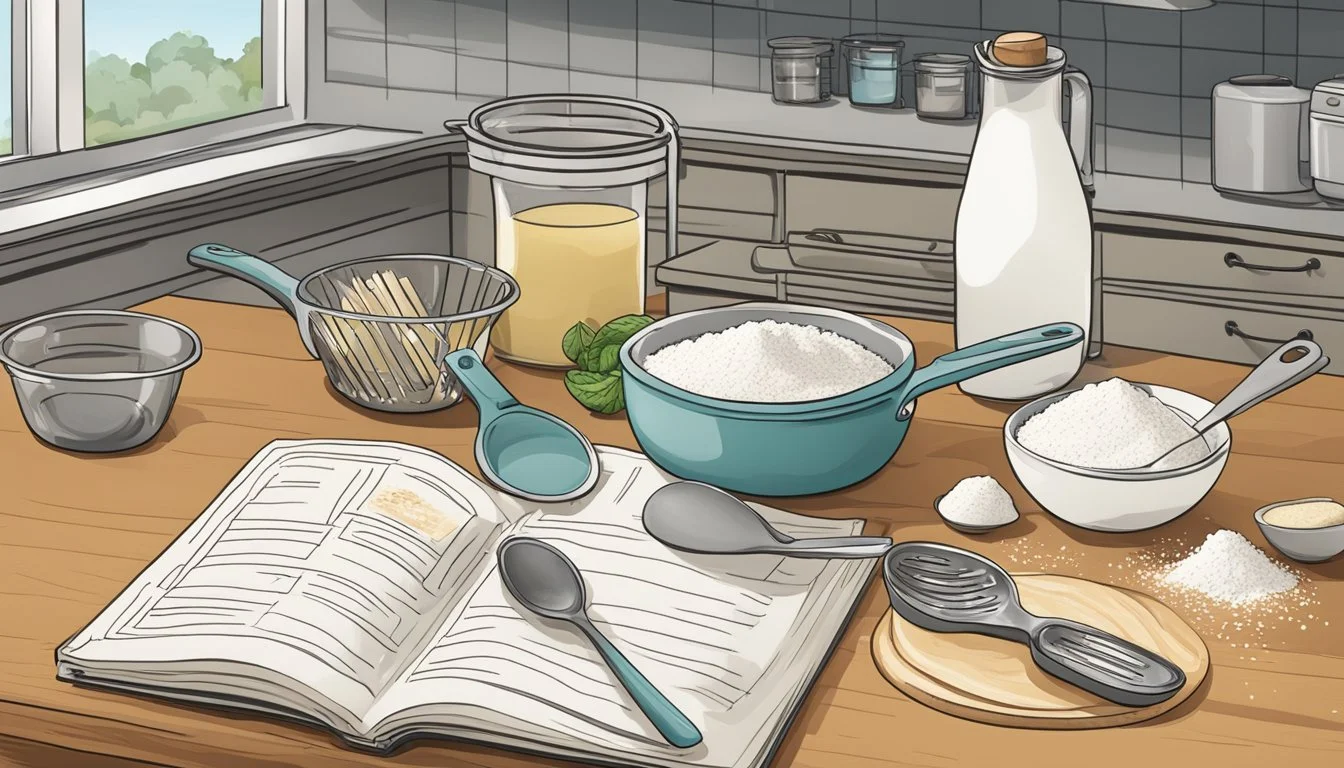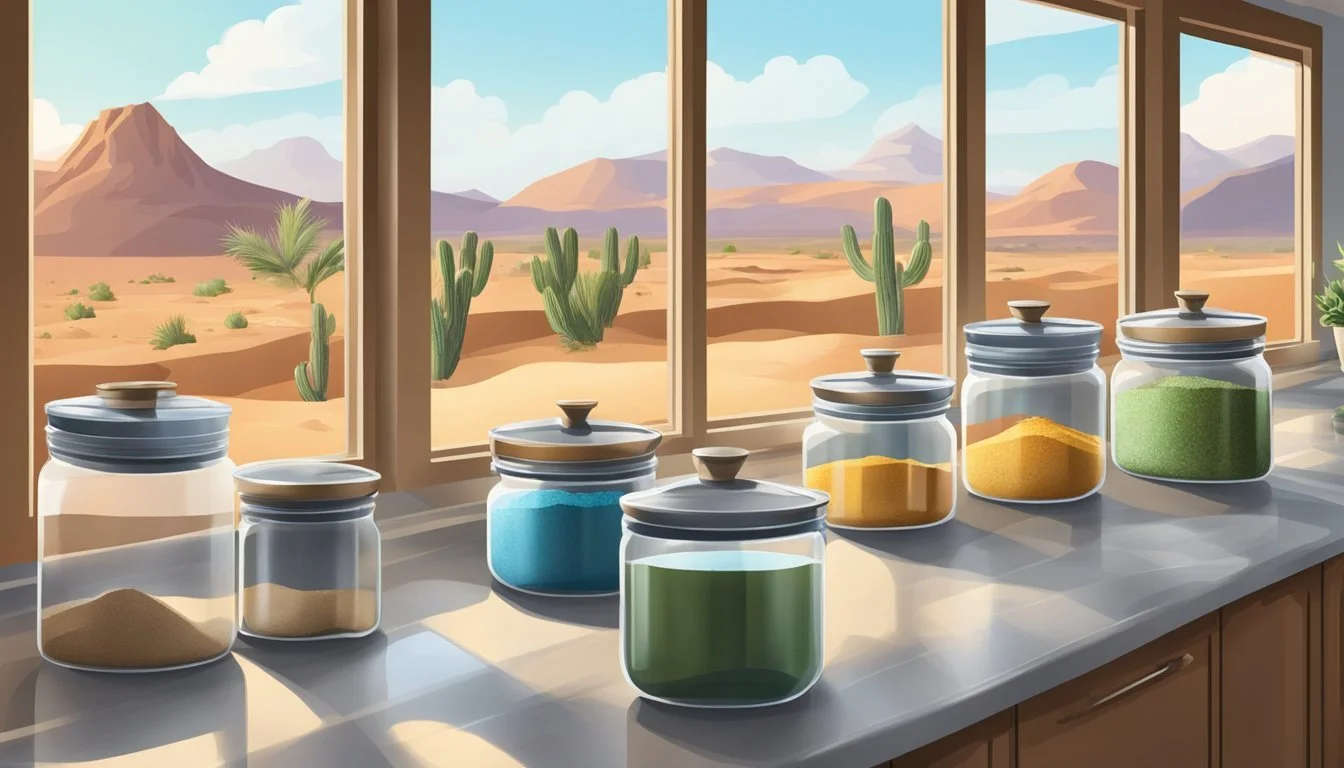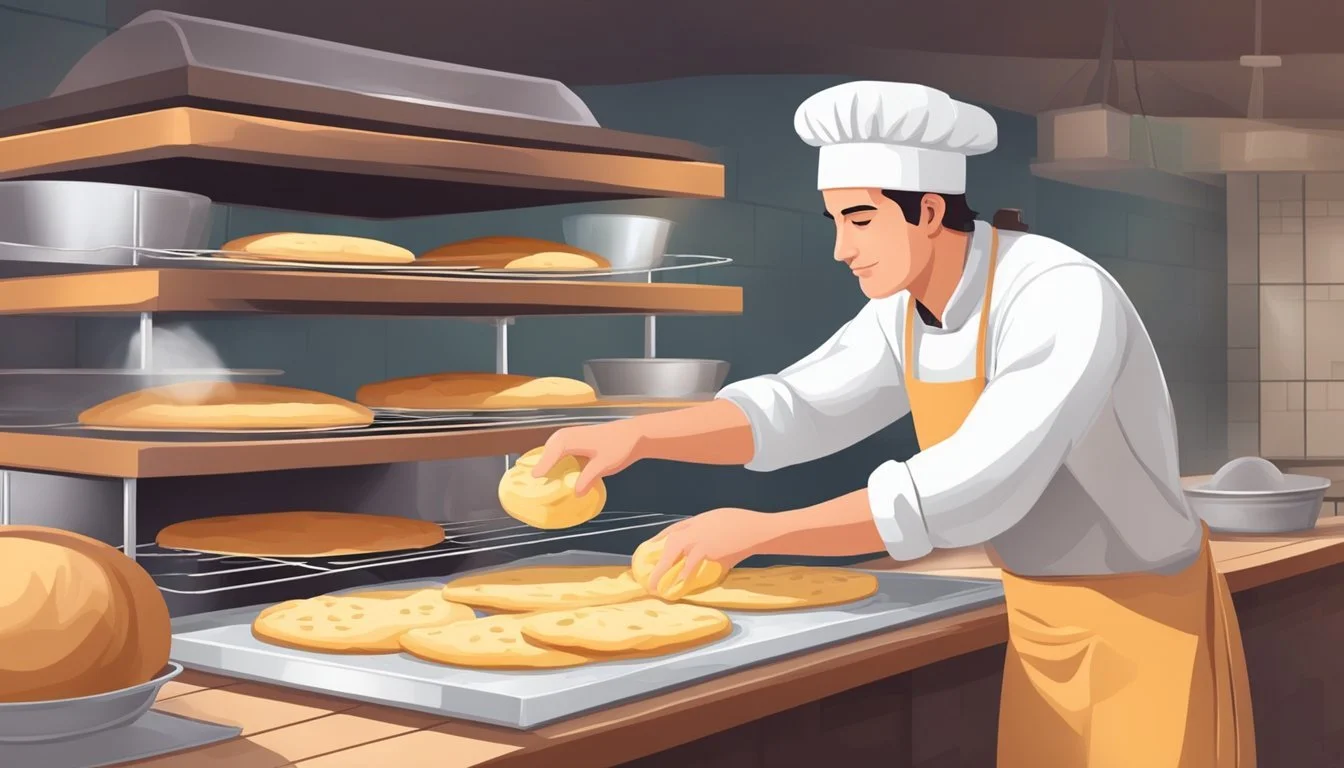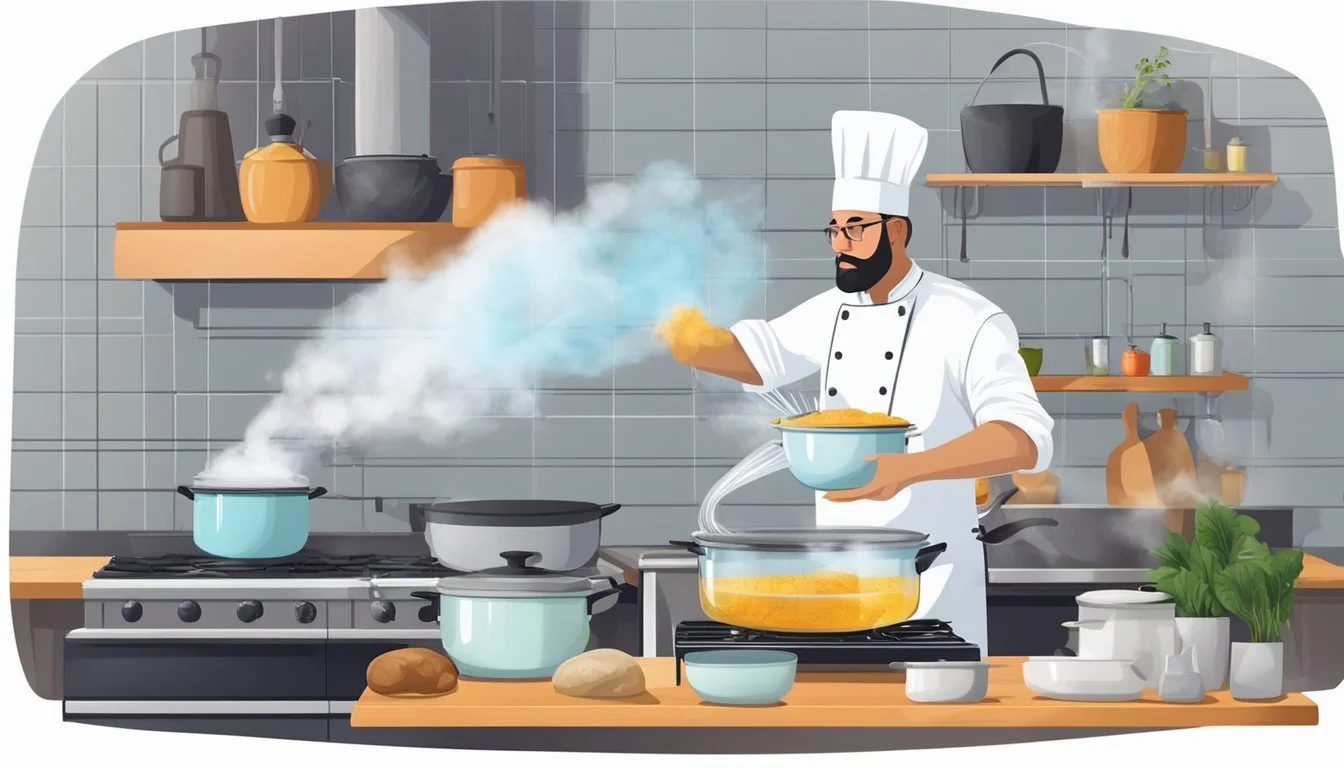How to Cook When You're in a Dry Climate
Essential Tips for Arid Area Cuisine
Cooking in a dry climate presents unique challenges that require adjustments to both ingredients and methods. The low moisture content in the air can affect the way food cooks, dries out, and even how it tastes. For instance, baked goods might require additional moisture to prevent them from becoming too dry or tough. Chefs and home cooks alike must be cognizant of the impact that a dry environment can have on the cooking process and make appropriate modifications to ensure their dishes turn out as intended.
Temperature regulation is another critical aspect of cooking in arid regions. Due to the lack of humidity, heat can escape more quickly, and this might mean altering cooking times or temperatures to achieve the desired results. Whether sautéing vegetables or roasting meats, one must be aware that the dry air can lead to faster moisture loss, which can toughen or dry out foods if not monitored closely. It's also worth noting that cooking equipment like ovens and stovetops may behave differently under these conditions, further emphasizing the need for vigilance and adjustment.
In terms of ingredient selection, retaining moisture becomes a priority. Cooks might find themselves incorporating more broths, oils, and cooking techniques that lock in flavors and juices. Similarly, storage of ingredients might require more attention to prevent them from drying out before use. By understanding these nuances, cooks can navigate the challenges of dry climate cooking and create satisfying meals that are both delicious and adapted to the demands of the environment.
Understanding Dry Climates
In dry climates, the unique weather conditions significantly influence cooking practices. Particularly, low humidity levels and the often accompanying high temperatures can affect the moisture content and behavior of ingredients. Recognizing these factors is crucial for culinary success in these environments.
Effects of Low Humidity on Ingredients
Flour: In dry climates, flour tends to be drier and may absorb less moisture. As a result, one might need to adjust the amount of liquid in baking recipes to compensate for the dryness.
Sugar and Salt: These ingredients can clump less in low humidity, which can affect their blending with other components in a recipe.
Fruits and Vegetables: Dehydration occurs faster in dry weather, causing these ingredients to lose moisture rapidly, which might lead to a concentration in flavor but also a change in texture.
Meats: The lack of moisture in the air means that meats might dry out more quickly during cooking, potentially resulting in a tougher texture unless properly managed.
Dairy Products: With lower levels of humidity, dairy products such as cheese and yogurt can dry out more rapidly, which could alter their intended consistency in recipes.
Adjusting Recipes for Dry Weather
Liquid Ratios: Cooks might need to increase the liquids in their recipes to account for quicker evaporation and absorption rates.
Cooking Time: They may find that reducing cooking time is necessary to prevent drying out ingredients.
Storage: Proper storage techniques become even more vital in dry climates; airtight containers are recommended to keep ingredients from drying out.
Oven Temperature: Adjusting the oven temperature can be important — lower temperatures might be utilized to slow evaporation of moisture from dishes.
By understanding the impact of dry climates on ingredients and recipes, cooks can make the necessary adjustments, ensuring that dishes retain their desired flavors and textures despite the challenges posed by the nature of the summer climate.
Kitchen Preparation and Equipment
When cooking in a dry climate, it’s crucial to maintain kitchen conditions conducive to comfort and safety, and to use tools that adapt to and mitigate the environmental challenges.
Maintaining an Optimal Cooking Environment
In dry climates, managing the kitchen's humidity and temperature is essential. Installing a humidifier can introduce necessary moisture into the air, protecting both the cook's comfort and the quality of the food. Conversely, an air conditioner is beneficial not only for cooling but also for maintaining a stable environment free from the harshness of the dry external air. Ensuring proper airflow can be achieved by strategically using fans or optimizing HVAC systems.
Utilizing shade from natural sources or window treatments can significantly reduce the heat gain from direct sunlight, which is especially strong in arid areas. Keeping windows closed during peak heat hours and using reflective or insulated window coverings can maintain cooler indoor temperatures without overburdening the air conditioning.
Climate Control Function Humidifier Adds moisture to the air Air Conditioner Cools and stabilizes environment Fans Improves airflow Shade Reduces solar heat gain
Tools for Cooking in Dry Conditions
The selection of kitchen tools in arid environments should focus on efficiency and the minimization of heat and moisture loss. One should opt for airtight containers to store dry ingredients, preventing them from losing any residual moisture. When boiling water or engaging in any cooking method that introduces steam or moisture into the air, it’s wise to use lids to trap water vapor, reducing the necessity for additional humidifying.
Here is a brief list of key tools and their functions:
Airtight Containers: Keeps dry ingredients from drying out further.
Lidded Pots and Pans: Conserves water and adds humidity to the air when cooking.
High-Humidity Fridge Drawers: These specialized drawers are designed to keep produce from wilting in low moisture environments.
When using these tools, one should also be mindful of the impact on indoor climate. For instance, opening the fridge frequently can introduce undue cold air, which the air conditioning system must then reheat. Utilizing cooking equipment that retains heat well can reduce the need to cook at higher temperatures, thereby conserving energy and keeping the kitchen more comfortable.
Ingredient Management
When cooking in a dry climate, chefs must pay careful attention to ingredient storage and recipe adjustments, as both will impact the final dish's texture and moisture content.
Proper Storage Techniques
Dry climates can quickly dehydrate commonly used ingredients such as sugar and flour, leading to clumping or drying out, which affects both texture and baking outcomes. To prevent these issues:
Sugar: Store sugar in airtight containers with a silicon packet to absorb any moisture.
Flour: Keep flour in a cool, sealed container to protect it from dry air and retain its quality.
Storing butter properly is also crucial; it should be refrigerated and only brought to room temperature before use to maintain its consistency. The pantry or storage area should be kept cool and potentially even humidified slightly to combat the dryness.
Adjusting Liquid Quantities in Recipes
A key challenge when baking in a dry climate is maintaining the correct moisture level in recipes. It may be necessary to adjust liquid quantities to achieve the right texture. Adaptations might include:
Increasing liquids: Add more water or milk by tablespoons to the recipe to compensate for quicker evaporation.
Reducing dry ingredients: Slightly lessen the amount of flour or sugar if the dish seems too dry during the preparation stage.
It's critical to remember that these adjustments should be made gradually and tastefully to ensure that the recipes maintain their intended flavor and texture profile.
Baking Adjustments
To achieve optimal results when baking in a dry climate, one must make precise alterations to ingredient proportions, baking times, and temperatures.
Modifications for Dry Ingredients
In a dry climate, flour and other dry ingredients tend to absorb less moisture, which can result in overly dry baked goods. To counteract this:
Reduce the amount of flour: Reduce flour by a tablespoon or two per cup to combat dryness.
Increase Sugars and Fats: Adding slightly more sugar or fat can help retain moisture. For example, in cookie dough, adding an extra tablespoon of sugar or butter can improve texture.
Altering Baking Times and Temperatures
Baking times and temperatures may need adjustment since ovens can behave differently in dry climates:
Decrease Baking Time: Monitor baked goods closely and consider reducing the baking time by a few minutes to prevent over-baking.
Temperature Variations: It might be necessary to lower the oven temperature by 5 to 10 degrees to prevent the outside from drying out before the inside is done.
Dealing with Altitude Variables
Altitude significantly impacts baking due to lower air pressure, so adjustments are essential:
Less Leavening Agent: At higher altitudes, decrease baking powder or soda, as gases expand more. For each teaspoon, reduce by 1/8 to 1/4 in recipes.
More Liquid: Increase liquids by adding 1 to 2 tablespoons per cup to avoid dry dough and cracking surfaces.
Baking Time Peculiarities: High-altitude baking may require either increased oven temperature or longer baking time to set structures before they over-rise and dry out.
Preservation of Food
When cooking in a dry climate, it is essential to consider how the lack of humidity affects food storage and how best to protect food from becoming overly dry.
Protecting Food from Excess Dryness
In dry climates, the ambient air can dehydrate food items, causing them to lose their natural moisture. This is particularly problematic for certain foods such as candy and baked goods like cookies or egg whites that can become overly brittle or hard when exposed to dry conditions. To maintain the optimal condition of these foods, one must take steps to limit their exposure to air and preserve their natural oils.
Baking: When baking in a dry environment, it's crucial to adjust cooking times accordingly to avoid overbaking, which can cause dehydration and lead to undesirable textures. Monitoring baked goods closely can prevent cracks and gaps from forming.
Cooling: After baking, allow items to cool down in an area that minimizes the drying effects. Implementing a slow cooling process will help the food to set properly without giving up too much moisture to the dry ambient air.
Hydration: In some instances, introducing hydration can help counteract the dryness. This could include covering foods with a lightly damp cloth or using specialized storage containers that incorporate hydration systems.
Furniture: Utilizing certain types of furniture, such as a cabinet with tight-sealing doors or a traditional bread box, can create an environment that helps retain the moisture content of foods.
Sealing Cracks and Gaps: It's important to store foods in airtight containers to prevent the dry air from creating further dehydration. This is particularly true for items that rely on retained moisture for freshness and texture.
By implementing these methods, one can protect food from the harsh, dry air and maintain its quality and taste in a dry climate.
Health and Safety Considerations
When cooking in a dry climate, individuals face unique health and safety challenges that are paramount to address for overall well-being. The aridity can affect skin condition, hydration levels, and safe food handling practices.
Managing Dry Skin While Cooking
Exposure to a dry environment typically results in loss of moisture from the skin, making it imperative for individuals to take steps to prevent excessive dryness. Cooking can exacerbate this issue, as frequent handwashing and handling of certain ingredients may strip natural oils from the skin.
To combat this, chefs and home cooks should consider:
Moisturizing regularly: Apply a hypoallergenic moisturizer before and after cooking sessions to help maintain the skin's protective barrier.
Hydration practices: Drinking ample water and maintaining proper hydration is essential, as dehydration can have a direct impact on skin health.
Using gloves: When practical, wear gloves to prevent direct contact with ingredients that may absorb skin moisture.
Cold water usage: While it may seem counterintuitive in a hot, dry climate, one should wash hands in lukewarm or cold water rather than hot to prevent additional skin drying.
Reinforcing these practices ensures one's skin remains as healthy as possible, even when working for extended periods in dry, sometimes harsh climates like a desert. It is vital for those living and cooking in such areas to remain vigilant about these health and safety considerations.
Culinary Tips and Tricks
In arid climates, chefs need to adapt their cooking methods and kitchen habits to counteract low humidity and high evaporation rates. Careful temperature control and moisture management are crucial to preparing delicious meals.
Effective Techniques for Dry Climate Cooking
When cooking in dry conditions, maintaining the right temperature is essential to prevent overcooking or drying out food. Here are some key techniques:
Preheat Your Pans: Dry climates tend to sap moisture from food quickly. To combat uneven cooking, chefs should ensure that pans are adequately preheated before adding ingredients.
Lower Heat When Necessary: In dry regions, consider reducing the heat a notch below the recipe's recommendation. High temperatures can exacerbate moisture loss, so a slightly cooler setting can help preserve the dish's integrity.
Roasting and Grilling: Use a thermometer to monitor cool spots in the oven or grill that may affect the meal's outcome. Close monitoring of the internal temperature of meats and other foods ensures they remain juicy and flavorful.
Moisture Retention: Introducing liquids like broths or sauces can help offset aridity. When baking, sometimes adding an extra tablespoon of water to dough and batter can make a big difference.
Creative Solutions for Humidity Control
Humidity control is vital to prepare food optimally in a dry climate. A couple of innovative strategies include:
Use of Humidifiers: Small kitchen humidifiers can introduce moisture back into the air, which is beneficial when proofing bread or when one desires to prevent ingredients like butter from hardening too quickly.
Cold Water Bath for Bowls: When preparing batters and doughs, placing mixing bowls into a larger bowl filled with cold water can help temper the effects of a hot, dry environment.
Storage Solutions: Chefs may store certain ingredients in airtight containers with a damp paper towel to add slight moisture. This can be particularly handy for keeping brown sugar soft and spreadable condiments like butter pliable.
Desert Living Adaptations: Those residing in the desert often suggest keeping several pitchers of water at different spots in the kitchen to help regulate the room's dryness, indirectly impacting food moisture levels as well.









